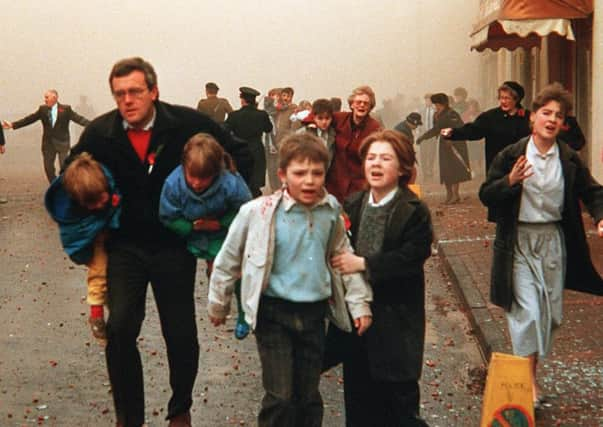Row over BBC reporter's claim IRA '˜didn't deliberately target civilians'


The source of a string of acclaimed books and documentaries on the Troubles, Mr Taylor made the comment as he launched a radio documentary ‘Fifty Years Behind the Headlines – Reflections on Terror,’ which aired on Saturday on Radio 4.
In it, he compared current Islamic terrorism with that of the Provisional IRA.
Advertisement
Hide AdAdvertisement
Hide AdSpeaking on Saturday’s BBC breakfast programme. he said: “They [the IRA] killed many civilians, let’s not underestimate that, but by and large the IRA tactic was not to deliberately kill civilians – although many civilians, I hasten to add, were killed by the IRA.”
But Ken Funston, advocacy manager for victims’ group, the South East Fermanagh Foundation, said the comment was “totally inaccurate and does not stand up to scrutiny”.
He added: “Simple research would indicate that the IRA practised the same sectarian tactics as loyalist terrorists in murdering at will those who defined as Protestants and who, more times than not, would have been pro-Union in outlook.
“In Fermanagh and the wider borderlands PIRA operated a campaign of ethnic genocide, I specifically refer to my own brother, Ronnie’s murder, in 1984. He was specifically targeted in a land-grab in an effort to remove the family from their border homestead.”
Advertisement
Hide AdAdvertisement
Hide AdThis was not an isolated incident but happened to countless others, he added. His brother had been in the UDR briefly, but was murdered eight years after he left.
Kenny Donaldson, spokesman for Innocent Victims United, said there is a trend to “decriminalise terrorism”.
This suggests Northern Ireland was a failed state, which therefore “brought about the circumstances and justification for terrorist bloodshed of one neighbour upon another”.
He added: “The truth is that the terrorist campaign waged within Northern Ireland had naked sectarian and ethnic fuelled hatreds at their heart. In borderland areas the IRA sought to push back the Protestant community in order to create buffer zones from which they would then have mounted attacks on more inland targets.”
Advertisement
Hide AdAdvertisement
Hide AdAccording to the reference work Lost Lives, over 36% of the 1,778 lives claimed by the IRA were civilians. A further 25.6% were HM Armed Forces members; 15.4% were RUC and 10.2% were UDR/RIR.
Some of the most notorious incidents where the IRA targeted civilians were: the Kingsmills massacre, 1976 – 10 deaths; the Teebane massacre, 1992 – eight deaths; the Enniskillen bomb, 1987 – 12 deaths; the Abercorn restaurant bomb, 1972 – two deaths and 70 injured; Bloody Friday, 1972 – nine killed and 130 injured by 20 bombs across Belfast; the Birmingham pub bombings, 1974 – 21 killed and 182 injured; La Mon Hotel attack, 1978 – 12 members of the Irish Collie Club killed by an IRA firebomb.
A BBC spokesperson said: “Peter is a highly regarded journalist who was talking about a documentary on his 50 year career reporting terrorism. During the interview he made it very clear that many civilians were victims of the IRA.”